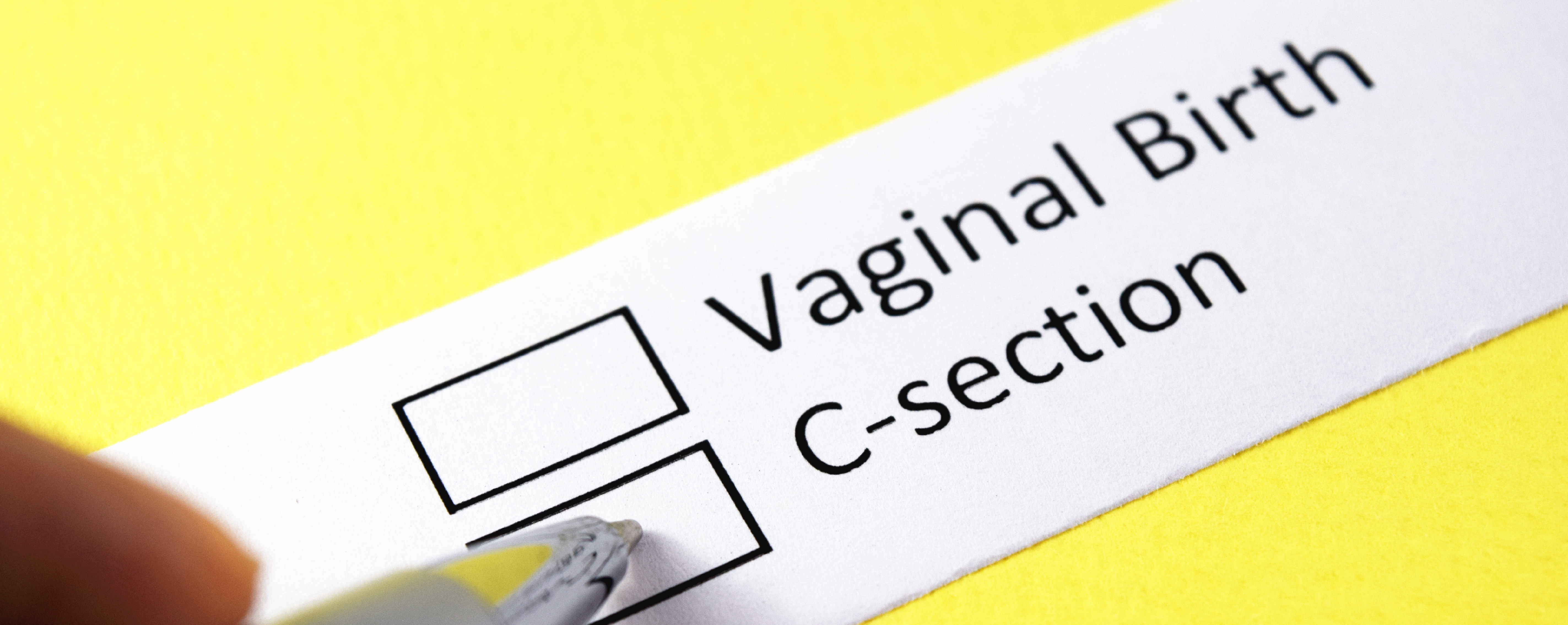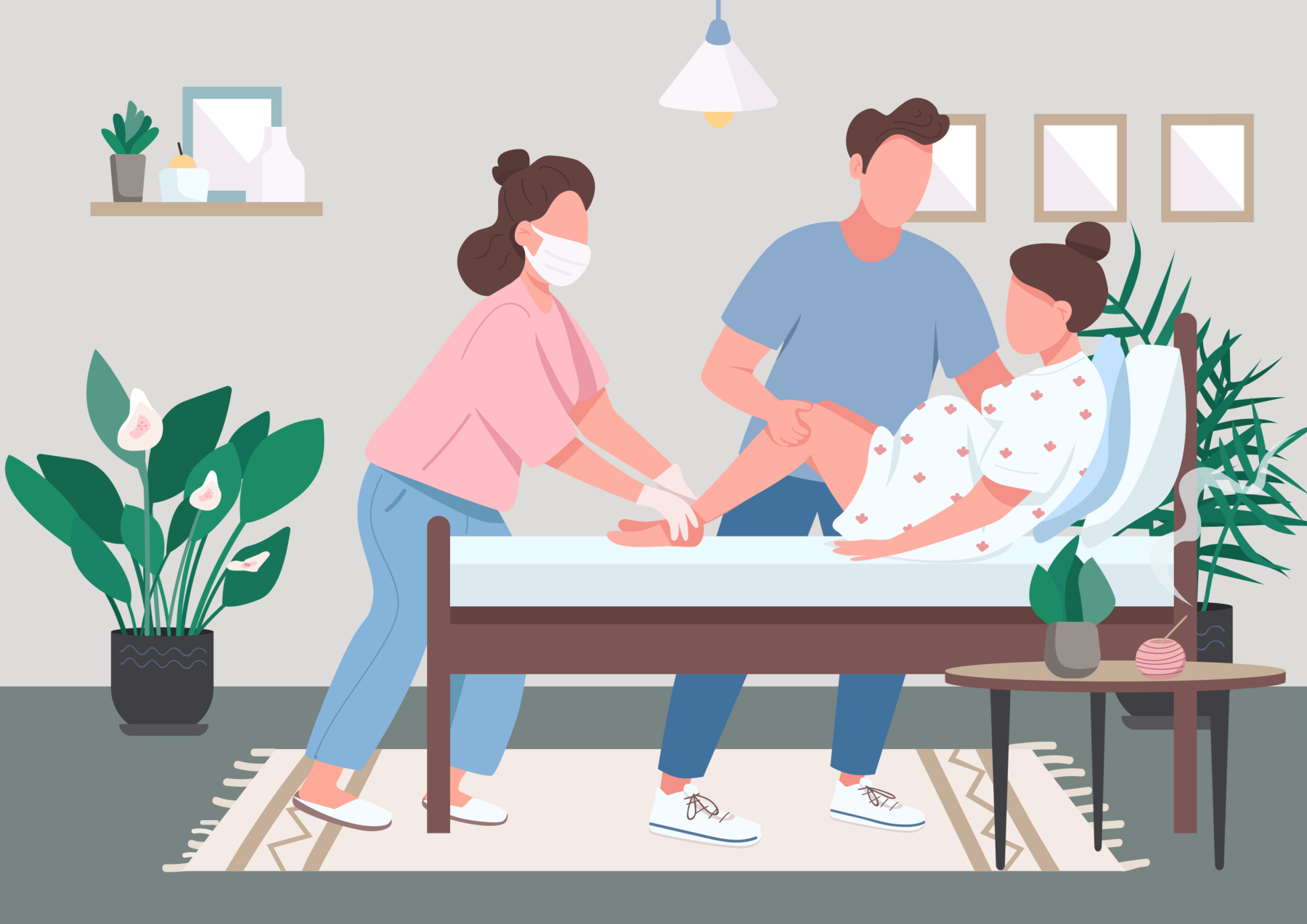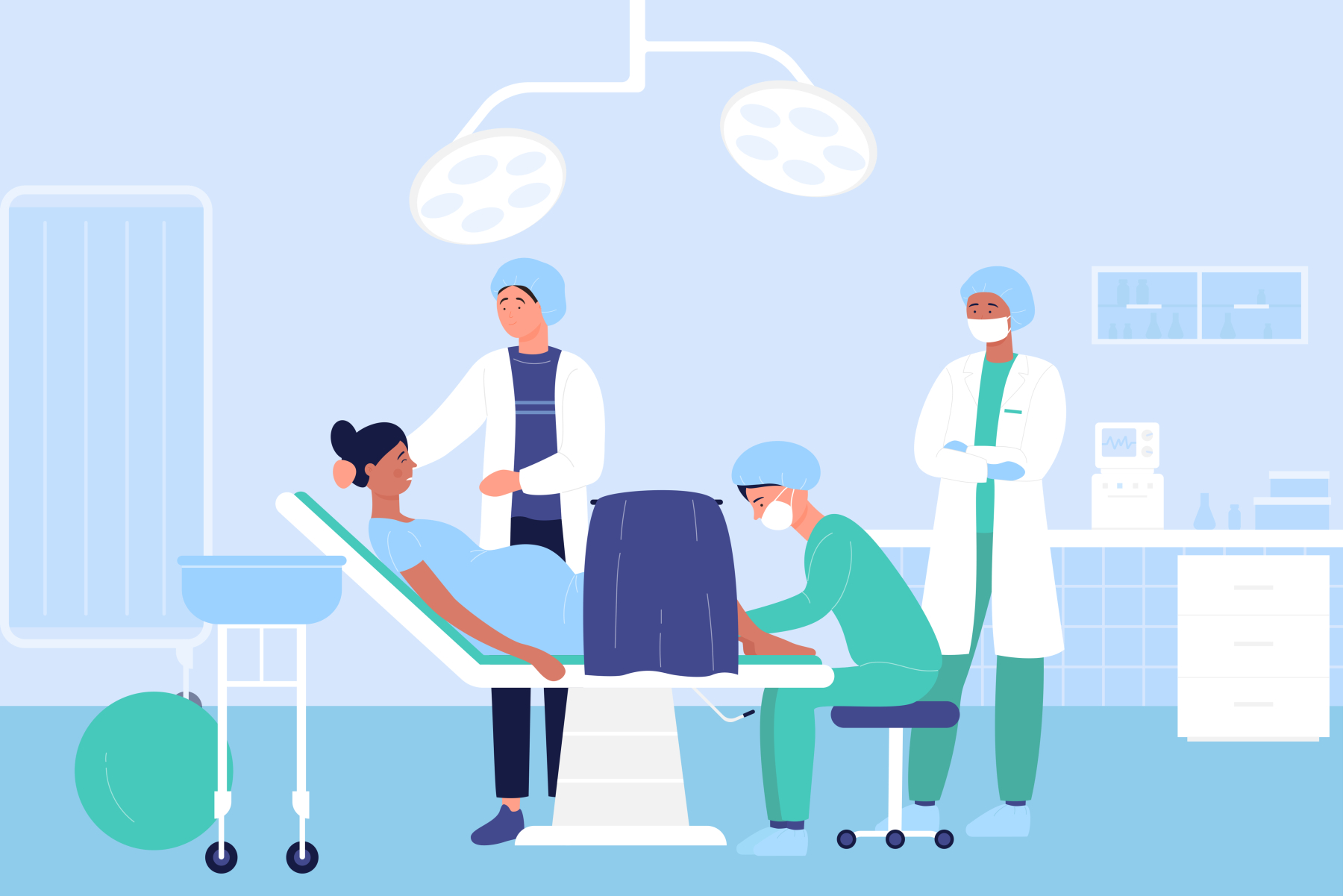
Which is Better: C-section or Vaginal (Natural) Delivery?

Trying to decide whether a C-section or natural/ vaginal delivery is better for you and your baby? While neither method of giving birth is objectively “better” than the other (both have short- and long-term risks and complications), there are a few things to consider about each.
We answer some common questions, as well as get OBGYN Dr. Shohreh Beski’s advice on the matter, to bring you clarity!
1. What happens during a C-section?
In a routine C-section, you’ll be brought into the operating room, and drapes/cloth will be put up just above your belly (you may not wish to watch yourself have major abdominal surgery).
The surgeon will make a horizontal incision between 4-6 inches long, just above where your pubic hair starts. Then, once the uterus is exposed, they’ll make another horizontal incision in the lower half of the uterus. The baby gets pulled out, briefly examined, and cleaned up. Meanwhile, the surgeon will remove the remaining umbilical cord and placenta, and stitch your uterus and abdomen closed. The procedure is very common!
Does it hurt?
Not exactly. It is technically major surgery, so a woman receives anesthesia, but this is normally delivered via an epidural, which allows you to remain awake.
That being said, while an epidural should keep you from feeling pain, that doesn’t mean you won’t feel anything at all. It varies from woman to woman, and some say they can feel pressure or other sensations during the procedure.
2. What happens during a vaginal birth?
During a routine delivery, the muscles of the uterus contract to push the baby headfirst down the birth canal, which starts between the pelvic bone and the tail bone, at the top of the cervix.
During labor, your cervix dilates, opening enough to accommodate the baby’s head and shoulders. Then, the baby’s head stretches the perineum — the area of skin between the vagina and the anus — until the baby can move out of the vagina.
Does it hurt?
If you think about it, it’s almost like a bowling ball is coming through the perineum, so yes, it will hurt, although an epidural should help dull the pain!
The direction the baby is facing inside the birth canal plays a role, too. In a textbook scenario, they’ll be face-down, but if they are face-up, it can cause intense pain in your lower back during and between contractions. It can also mean pushing harder, for longer.
3. What is the difference in recovery time?
Assuming there are no major complications, recovering from a vaginal delivery is significantly easier and quicker than recovering from a C-section.
A C-section is an invasive procedure with a much longer recuperation (you may not feel back to normal for 6-8 weeks). You’re also recovering from major abdominal surgery and trying to care for a baby, which does create an extra challenge as your core has to heal, and we need our core for most movement. With a vaginal delivery, you could be up and running the next day!

4. What kind of complications could I have?
You could lose a lot more blood during a C-section than during a vaginal delivery, so the chances of hemorrhage are slightly higher. And as with any surgery, there is also a risk of infection and blood clots.
There are also plenty of complications that can arise when you’re pushing a baby out of your vagina. You can have something called shoulder dystocia – if the baby gets stuck coming out, you have to get them out fast and may have to break their clavicle (the bone connecting the breastplate to the shoulder) to get them out.
A very common, but typically minor, complication of vaginal delivery is vaginal tearing; as the baby’s head passes through the perineum, the skin can stretch to its limit and tear. To avoid this, the OBGYN can use olive oil, as it can help the baby’s head slide, and the perineum stretch.
However, sometimes an ‘episiotomy’ (a small cut made to widen the vaginal opening and avoid significant tearing) is necessary. With a few stitches and giving yourself time, episiotomies generally heal well and typically don’t affect mobility.
Long-term complications as a result of a vaginal delivery include bladder control issues and pelvic organ prolapse. Bladder control problems affect up to a third of women. Prolapse, a condition where the vaginal walls and uterus sag, sometimes so much that they begin to protrude from the vagina, is a bit less common and generally affects women later in life.
5. So, which option is better for my baby & me?
Barring complications, neither is better!
Studies have shown that babies born via C-section have lower lung function immediately after birth, but things even out within a few days. There’s also been research indicating C-section babies may also have more problems later in life, with some concern about allergies and asthma. However, breastfeeding immediately decreases your child’s risk of eczema, allergies, hay fever, and builds their immune system.
Dr. Beski is a bit biased and personally recommends cesarian (C-sections):
“Everything is relative, but because you lose your pelvic floor muscles from a vaginal delivery and may have to deal with scarring, pain during sexual intercourse in the future, and stress incontinence, I tend to recommend C-sections. That’s not to say all women who choose to have a natural (vaginal) delivery will have all of these long-term complications. But as an OBGYN, I am constantly seeing the small percentage of patients who are dealing with such issues later in life, so that’s why given my vantage point, I would say C-section is safer, specifically if you are in a country and environment where the surgeon is able to carry out the surgery safely.”
6. Can I choose which kind of birth I want?
That depends. A lot of younger people now are electing to have a C-section because they don’t want to deal with urinary incontinence, fecal incontinence, etc.
If there aren’t any big risk factors, you may be able to work with your doctor to schedule an elective C-section (depending on which country you are in and your health/ insurance system).
In some cases, a C-section is unavoidable, or at the very least, it’s the least risky option, as it’s not recommended to have a vaginal delivery if the baby is not head-down.
At the end of the day, it doesn’t matter how your baby gets here, as long as everybody is safe and healthy!
Meet our expert:
Dr. Shohreh Beski is a Consultant Obstetrician and Gynecologist (OBGYN) at the Royal London Teaching Hospital with over 25 years of experience working both privately and for the National Health Services (NHS) in the UK. She has a vast experience in all aspects of women’s health, including: fibroids, pelvic pain, endometriosis, heavy periods, polycystic ovaries, vaginal atrophy, and lichen sclerosus. She is a pioneer for the groundbreaking treatment called Lipogems, which uses your own regenerative cells to restore your vaginal health and improve certain vaginal conditions, including vaginal atrophy, dyspareunia (pain during sex), lichen sclerosus, lichen planus, urinary stress incontinence, and vaginal itching/ dryness.
